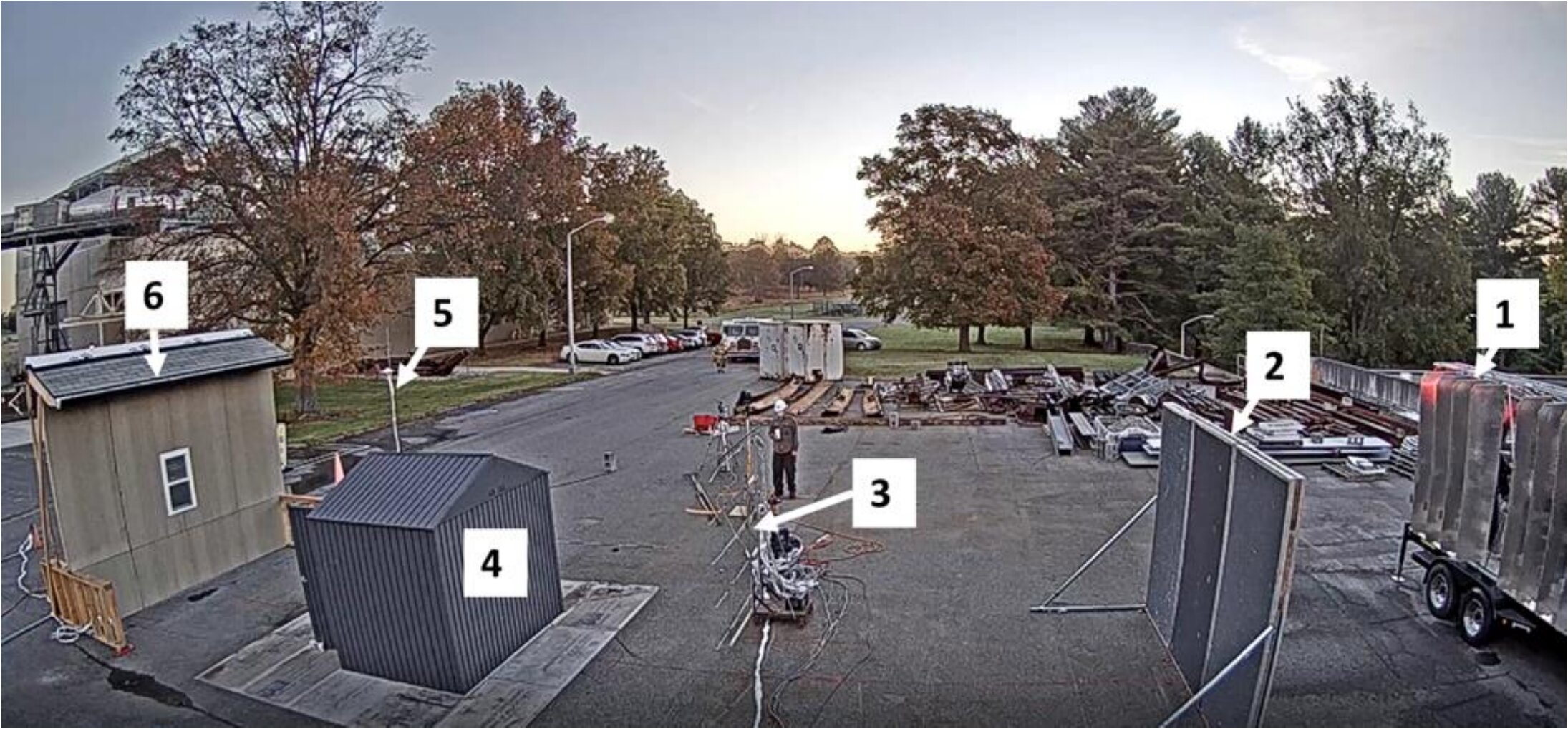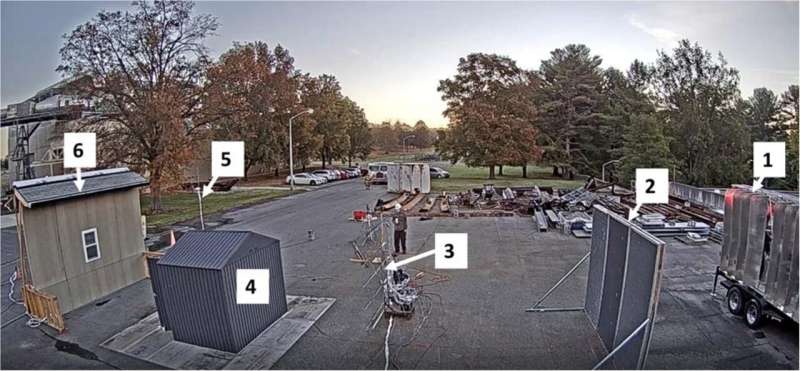

It may seem obvious that a flammable structure placed next to a house poses a fire hazard, especially if it’s in a wildfire-prone community. What has been less clear, though, is how far away these items, such as sheds, need to be located to significantly limit fire spread to homes. New research led by the National Institute of Standards and Technology (NIST) has begun to provide important answers.
A team of fire safety experts at NIST, the California Department of Forestry and Fire Protection (CAL FIRE) and other organizations has conducted a series of rigorous experiments to gauge the ability of flaming sheds to ignite residential-type structures.
Based on their data, the authors of a new report determined that, under certain conditions, wooden and steel storage sheds up to 64 square feet (5.9 square meters) in size should be at least 10 or 15 feet (3 or 4.5 meters) away from homes depending on their size. In most cases, the spacing for sheds of these sizes is unregulated, even in wildfire zones, but the new data could form a basis for improved guidance and regulations.
The findings also hint at the importance of conducting similar studies for the placement of other potential fire hazards, including adjacent homes, parked vehicles and more.
“We tested on flat ground and with new, fire-hardened residential structures, so these distances are absolute minimums,” said NIST fire protection engineer Alex Maranghides, lead author of the report. “Homes that are on slopes—which can intensify wildfire spread—or that are of older construction may need more of a buffer.”
Several NIST wildfire investigations have shown that sheds play a key role in facilitating the progression of flames throughout communities in the wildland-urban interface (WUI). Science-based guidance on where to place sheds has been scant, partially due to a lack of data. With the threat of wildfires growing in recent years, NIST and CAL FIRE devised a plan to find answers.
The researchers conducted several tests inside NIST’s large fire test facility prior to the new study to understand the fire hazard presented by storage sheds. Using the results, they narrowed down the myriad possible tests that could be conducted under realistic conditions outdoors to a few they deemed most valuable for determining safe distances.
Across 13 experiments on the NIST Gaithersburg, Maryland, campus, the authors of the new report ignited varying amounts of wood within sheds of differing size, material and distance from a target structure. The researchers used a wind machine to tilt flames from burning sheds in the direction of targets built to represent an exterior wall of a residence.
Most targets were made with fire-resistant elements, including an outer layer of cement boards, to meet the requirements of the California building code for the WUI. One test used a target that was not hardened to resist flames.
While a handful of tests resulted in unscathed targets, most caused some level of damage, which ranged from deformed window frames and screens to fractured glass and cracked cement siding. The unhardened target structure fared the worst out of the bunch, its wooden exterior wall and eaves becoming quickly engulfed in flames.
Apart from hardening, the authors saw that the structure separation distance, as expected, was a highly influential factor.
Two key numbers emerged during the tests: 10 and 15 feet (3 and 4.5 meters). These were the striking distances—presented in customary units in the report because they are most familiar to consumers—of flames from sheds less and greater than 26 square feet (2.4 square meters) in size, respectively. Beyond these distances, targets were spared, however, sheds larger than 64 square feet (5.9 square meters) were not tested and may exhibit a further reach.
The authors note in the report that these separation distances apply in all directions, to avoid a situation in which a shed is placed far enough from one home, but too close to a house on a neighboring lot. This awareness of the fire hazard that properties pose to one another echoes a key tenet of NIST’s WUI Hazard Mitigation Methodology—a science-based guide for community wildfire protection.
“Fire doesn’t distinguish between properties. To prevent a fire from running rampant through a community, you need to consider the spacing of fuels at the community level, not just individual properties,” Maranghides said.
While the separation distances are applicable to the scenarios covered in the tests, many other conditions could intensify the impact of shed flames. In those cases—if a home is not hardened for fires or if it is uphill from the shed, for example—the separation distance would need to be greater.
Although fire-hardening is critical, the report suggests it is not a silver bullet for reducing the fire hazard of sheds. Sizing down, relocating and even removing sheds altogether are all potential solutions that should be considered, Maranghides said.
The report represents a major step toward improved, science-based guidance for the spacing of structures for WUI zones, which will be particularly useful for dense communities where space is limited and flammable objects need to be managed with care.
The authors plan to determine additional separation distances for a variety of combustible items in the future. In particular, the results of the new study highlight the importance of investigating the fire hazard posed by homes located near other homes within the same or on separate properties, which in some WUI zones are currently permitted to be as close together as 6 feet (1.8 meters).
“We are already pushing the separation distance out to 15 feet for sheds that are far smaller than single family homes. This begs the question of how much larger the safe separation distance will be between homes,” Maranghides said.
More information:
Alexander Maranghides, NIST Outdoor Structure Separation Experiments (NOSSE) with Wind, NIST (2023). DOI: 10.6028/NIST.TN.2253
Provided by
National Institute of Standards and Technology
Citation:
For sheds in wildfire zones, researchers determine how close is too close to home (2023, June 1)
retrieved 1 June 2023
from https://phys.org/news/2023-06-wildfire-zones-home.html
This document is subject to copyright. Apart from any fair dealing for the purpose of private study or research, no
part may be reproduced without the written permission. The content is provided for information purposes only.